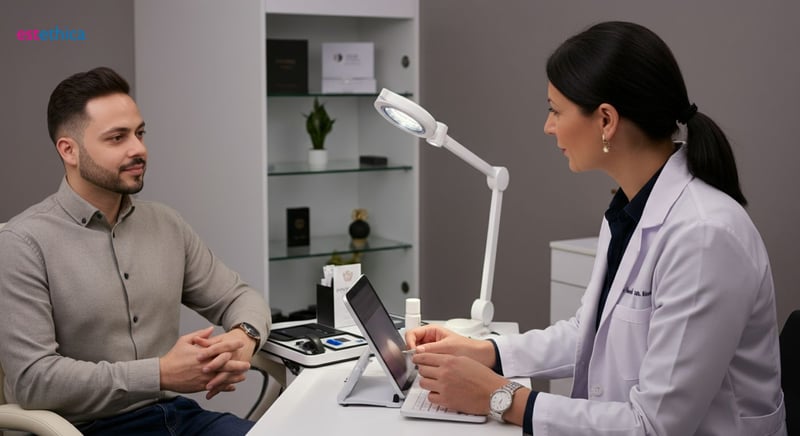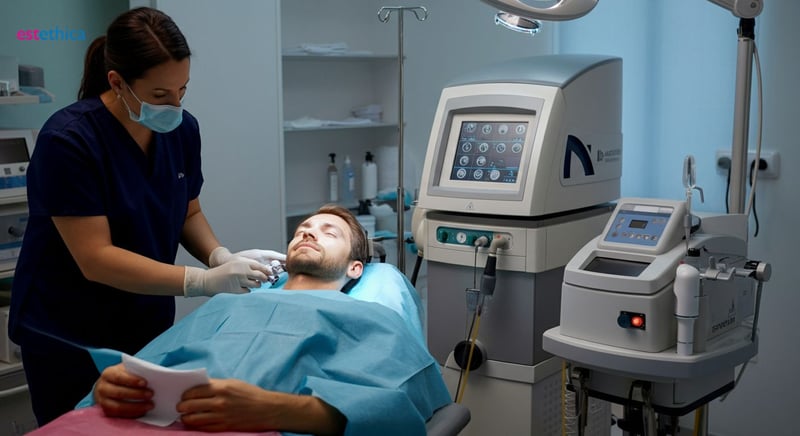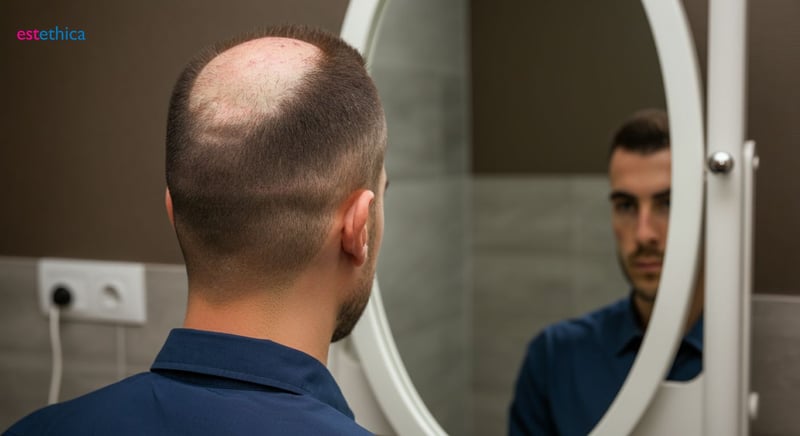Unlocking Confidence: Your Guide to Hair Transplantation
Rediscover your confidence with cutting-edge hair transplantation techniques. Explore your options at estethica and embrace a new you.
In the modern world, our appearance can directly impact our confidence and self-esteem. Hair loss, a common issue affecting many, often leads to diminished self-belief. Fortunately, hair transplantation has emerged as a revolutionary solution. Follow this guide to understand how you can restore not only your hair but also your confidence.
Hair Restoration Revolution: Understanding Modern Techniques
Exploring the Evolution of Hair Transplant Techniques
The landscape of hair restoration has dramatically evolved, thanks to innovations that offer more effective and less invasive solutions. Modern techniques like Follicular Unit Extraction (FUE) and Direct Hair Implantation (DHI) represent a significant leap forward, minimizing recovery times and maximizing natural appearances. FUE involves extracting individual hair follicles from the donor area, while DHI enhances this process by using specialized implanter pens for precise placement. These advancements mean that individuals seeking hair restoration can achieve denser, more natural-looking results without extensive surgery.
These cutting-edge methods are especially beneficial for those looking to address specific issues such as a receding hairline. Moreover, the precision offered by techniques like Multi DHI allows for customized treatments that cater to the unique needs of each patient. Understanding the nuances of these techniques is essential for anyone considering a hair transplant. By choosing a clinic that employs advanced technology and expert practitioners, individuals can look forward to a hair restoration journey that is both effective and satisfying.
Key Advancements in Hair Restoration
- Minimally Invasive Procedures: FUE and DHI techniques significantly reduce scarring and recovery time compared to older methods.
- Enhanced Precision: The use of implanter pens in DHI allows for precise control over the depth and angle of each implanted follicle.
- Natural-Looking Results: Modern techniques prioritize achieving a natural hairline and density, making the hair transplant undetectable.

Is Hair Transplantation the Right Choice for Your Hair Loss?
Understanding the Key Factors for Hair Transplant Suitability
Deciding on a hair transplant involves careful consideration of several personal and physical characteristics. The degree of your hair loss, the quality and availability of donor hair, and your overall health play crucial roles in determining the potential success of the procedure. Clinics like estethica offer comprehensive evaluations to assess these factors, ensuring that each patient receives personalized advice tailored to their unique circumstances. Opting for a hair restoration is a significant decision that should align with realistic expectations and treatment goals.
Furthermore, it's essential to consider your commitment to the post-operative care needed to maintain the transplanted hair. This includes following specific care routines and potentially undergoing additional treatments to support the longevity of the results. A well-informed decision, taking into account both the immediate and long-term aspects of hair loss treatment, will lead to a more satisfying outcome. Seeking expert advice from clinics specializing in advanced techniques can provide a clearer understanding of what to expect and how to achieve the best possible results.
Steps to Evaluate Your Candidacy for a Hair Transplant
- Comprehensive Consultation: Undergo a detailed assessment at a reputable clinic like estethica to evaluate your hair loss and donor hair quality.
- Realistic Expectation Setting: Understand the potential outcomes and the level of maintenance required post-surgery with guidance from your consultant.
- Consider Long-Term Commitment: Prepare for the necessary aftercare and potential follow-up treatments to ensure the longevity of your hair transplant.

FUE Hair Transplant: Minimally Invasive, Maximum Impact
Exploring the Benefits of FUE for Hair Restoration
FUE (Follicular Unit Extraction) provides numerous advantages over traditional hair transplant methods, making it a preferred choice for many seeking hair restoration. This technique involves extracting individual hair follicles directly from the scalp, which results in minimal scarring. Patients often appreciate the quicker recovery times and the ability to return to their daily routines sooner. estethica Global utilizes advanced FUE techniques, ensuring patients receive the most effective treatment with natural-looking results.
The precision of FUE allows for targeted hair loss treatment, effectively addressing areas with thinning or balding. Furthermore, the versatility of FUE makes it suitable for various types of hair loss, including receding hairlines and general thinning across the scalp.
Factors Influencing the Perceived Value of FUE
- Reduced Scarring: FUE leaves only tiny, almost invisible scars, making it ideal for those who prefer shorter hairstyles.
- Natural Results: The precise placement of individual follicles ensures a natural density and hair direction, enhancing overall appearance.
- Shorter Recovery: Patients experience less discomfort and a quicker return to normal activities compared to traditional methods.

Beyond the Procedure: What to Expect After Your Hair Transplant
Navigating the Recovery Timeline After a Hair Transplant
Following a hair transplant, understanding the recovery timeline is crucial for managing expectations and ensuring optimal results. Initially, patients may experience mild swelling and redness, which typically subsides within a few days. The transplanted hair will then enter a shedding phase, usually around 2 to 4 weeks post-procedure, before new growth begins. This is a normal part of the process and not a cause for concern. Consistent follow-up with clinics like estethica, which provide detailed aftercare support, can help manage any anxieties during this period. The expected growth phase starts around 3 to 4 months, with noticeable improvements in hair density appearing over the following months.
To promote healthy hair restoration, adherence to the clinic's post-operative instructions is essential. This includes taking prescribed medications, avoiding strenuous activities, and protecting the scalp from sun exposure. Some clinics may recommend additional treatments, like PRP therapy, to stimulate follicle growth. Understanding this timeline and adhering to aftercare guidelines can significantly contribute to a successful hair loss treatment outcome.
Post-Transplant Care Essentials for Optimal Results
- Medication Adherence: Following the prescribed medication schedule is vital for preventing infections and promoting healing.
- Gentle Hair Care: Using mild shampoos and avoiding harsh treatments helps protect the newly transplanted follicles.
- Sun Protection: Shielding the scalp from direct sunlight prevents damage to the sensitive skin and hair grafts.
Key Stages of Hair Growth After Transplantation
- Initial Healing (1-7 days): Focus on gentle care and minimizing any disturbance to the transplanted area.
- Shedding Phase (2-4 weeks): Expect transplanted hairs to fall out as the follicles enter a resting phase.
- New Growth (3-4 months onwards): Noticeable hair growth begins, with continued improvement in density over the following months.
Advanced FUE and DHI Techniques for Natural-Looking Hair Restoration
Detailed Aftercare Support Ensuring Successful Hair Transplant Outcomes
Frequently Asked Questions
What are the key benefits of modern hair restoration techniques like FUE and DHI?
How do I know if a hair transplant is the right solution for my hair loss?
What can I expect during the hair transplant recovery period?
What makes FUE (Follicular Unit Extraction) a preferred method for hair transplantation?
Achieve your aesthetic goals with a personalized treatment plan designed just for you.
📞 Book Your Free Consultation!